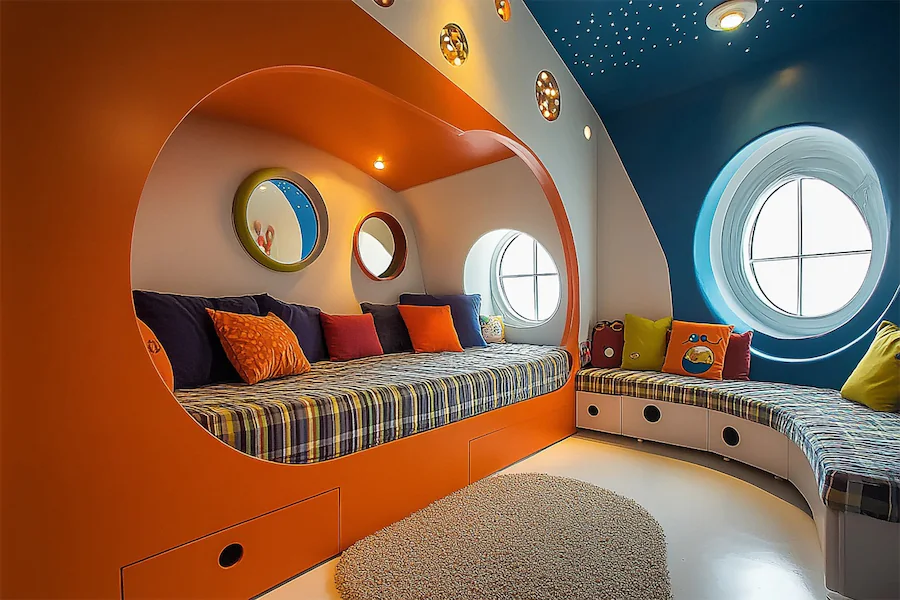A dynamic kid’s room is designed to be flexible and adaptable, allowing the space to grow with the child. Incorporating elements that can be easily updated or rearranged ensures the room remains functional and engaging through various stages of childhood.
History and Origins of Dynamic Kid Rooms
The concept of dynamic kid rooms emerged from the need to create versatile spaces that accommodate a child’s developmental changes. Traditional static designs often required frequent overhauls, leading to the adoption of more flexible and modular approaches in children’s interior design.
Key Features of Dynamic Kid Rooms
- Modular Furniture: Utilizing furniture pieces that can be reconfigured or serve multiple purposes, such as loft beds with integrated desks or storage units, maximizes space and functionality.
- Adjustable Storage Solutions: Incorporating adjustable shelving and storage systems allows for easy adaptation as the child’s needs change, ensuring the room remains organized and clutter-free.
- Neutral Base with Interchangeable Accents: Starting with a neutral color palette for walls and major furnishings provides a timeless backdrop. Adding interchangeable accessories like colorful bedding, rugs, and wall art makes it simple to update the room’s theme or style.
- Creative and Playful Elements: Incorporating features like chalkboard walls, climbing ladders, or reading nooks encourages creativity and play, making the room a stimulating environment.
Applications of Dynamic Kid Rooms
- Shared Bedrooms: Dynamic designs are particularly beneficial in shared spaces, where adaptable furniture and storage solutions can help delineate personal areas and accommodate the needs of multiple children.
- Small Spaces: In homes with limited square footage, dynamic kid rooms maximize functionality by utilizing vertical space and multifunctional furniture, ensuring the room serves various purposes without feeling cramped.
- Evolving Interests: As children grow, their interests and hobbies change. A dynamic room can easily transition from a nursery to a toddler’s playroom to a teenager’s study area with minimal modifications.
Considerations When Choosing Dynamic Kid Room Elements
- Safety: Ensure all furniture and fixtures are child-safe, with no sharp edges, and are securely anchored to prevent tipping.
- Quality and Durability: Invest in high-quality, durable materials that can withstand wear and tear, extending the lifespan of the room’s components.
- Personalization: Involve the child in the design process to create a space that reflects their personality and interests, making it a place they love to spend time.
- Budget: Plan and prioritize elements that offer the most significant impact and longevity, ensuring the design remains cost-effective over time.
Conclusion
Creating a dynamic kid’s room is about blending flexibility, functionality, and fun. By thoughtfully selecting adaptable furniture, adjustable storage, and interchangeable decorative elements, you can design a space that evolves with your child, providing a nurturing environment for years to come.
